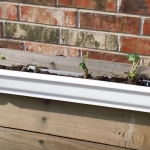Practical Ways to Boost Radio Reception
Choosing the Best Radio
Not all radios are created equally, and it’s important to have one that is designed to hone in on signals to begin with. A poor-quality radio will give you poor reception even if you have the greatest antenna in the world. Believe it or not, some of the best radios out there are ones that are found in vehicles. They have a high degree of selectivity, or the ability to focus on a frequency without capturing a lot of interference along the way.
One of the reasons that car radios are so good is that they are designed to receive signals while the vehicle is in motion. Using a car radio instead of a cheap home or office clock radio or portable device will give you an excellent foundation in which to build upon.
Antennas
Using the right antenna and orienting it properly is another obvious way to cure many problems with reception. However, using the right antenna in conjunction with the right radio can produce amazing effects. Many smaller radios either have built-in antennas, or they use the power cord or headphones to capture a signal. You want a radio that has at the very least a stand-alone antenna. This will allow you to add a wire and feed it up to another antenna for better reception if necessary. Some radios, such as vehicle ones, have a jack for a coaxial cable in the back. This is one of the better options to consider because you can directly feed a more powerful antenna directly into the unit.
Antennas work best when there is a line of sight with a transmitter or relay tower. This is why it’s best to have an antenna on the roof or on a small tower that rises above the surrounding terrain. Some people have even attached antennas to trees in order to optimize reception. You can also use an old television antenna, add a radio switch to it and convert into one that will capture radio frequencies as a practical and affordable modification. You may also need to orient the antenna in the direction of the transmitter, especially if you are far away or receiving a weak signal. Keep in mind that some radios will not pick up certain frequencies if the transmission is weak or blocked by far away obstructions.
Interference
Finally, interference from other devices or appliances can dramatically reduce quality and reception. Interference can come from numerous sources in and outside of the home. Tall buildings, terrain, other transmitters on a nearby frequency, microwaves, WiFi routers and wireless appliances and gadgets can all impact radio reception. Identifying and eliminating causes of interference by switching off certain devices can help to improve reception.
Remember that dealing with poor radio reception may involve a little bit of detective work in order to identify interference or tweak antennas. However, it is also important to have a quality radio to begin with as well. Use these guidelines before investing in expensive and complex equipment, and you may be able to significantly boost your reception and signal clarity.
More Articles From This SIte
Pages:
- 1
- 2














